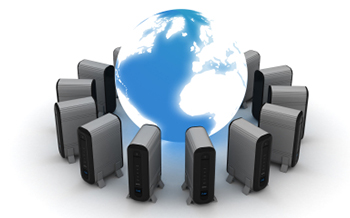
Three Steps To Fix IT Management for SMBs
Small-to-medium-sized businesses (SMBs) tend to have a more difficult time managing IT than larger enterprises. Despite being as technology dependent as larger enterprises, SMBs have tighter budgets and fewer resources to devote to IT management. This leads to a more reactive "break-fix" approach to their technology that never does any smaller company or organization any good.Here's what break fix most often leads to. If the burden rests on the shoulders of hourly or salaried in-house IT support, and they're too busy putting out fires all day, then their skills and talents are essentially wasted.
If there is no in-house tech support, and many smaller companies and organizations don't have even one onsite "IT guy", SMBs are commonly taken for a ride by some of the more unscrupulous on-call IT consultants.
Although "If it ain't broke, don't fix it" is a popular saying, it should never be applied to the management of business technology. The cost of downtime can crush any barely surviving small business. The combined impact of lost revenue, lost productivity, and lost brand reputation is a severe hit that many SMBs aren't built to withstand.
It pays to be proactive, not a reactive about technology. This requires a cultural shift from how IT has commonly been handled in the past. Say goodbye to manual, yet necessary, processes and hello to a better way for businesses to meet their technology needs - a smarter and more cost-efficient way.
Three Steps To Better Manage Your Business Technology
Be Proactive – More often than not, it's the things that aren't caught early on that turn into costly business disruptions. For instance, many of the hardware, software, and application failures that cause downtime occurrences are preventable; they're just not detected and addressed early enough.
SMBs today have the advantage of using a Remote Monitoring and Management (RMM) tool to help their existing in-house support staff get a grip on their workload.
A RMM tool, combined with an outsourced 24/7 Network Operations Center (NOC), monitors your technology all day and all through the night via one comprehensive interface that is even accessible with a mobile device. This kind of around the clock monitoring transforms technology management. Problems can be nipped in the bud with an alert and prompt ticket resolution before they turn into major issues that disrupt day-to-day operations.
Automate/Schedule Mundane Tasks – Free the in-house support staff from everyday manual maintenance and monitoring by automating a broad range of IT security and monitoring tasks.
Get More From Your In-House Team – If you have any in-house IT support, you've likely hired some incredibly skilled and talented people who would be more worthy contributors to your company or organization if they weren't always so tied up fixing things and performing monotonous tasks. With RMM and NOC solutions, SMBs can put these individuals to work on projects that matter. They are freed-up to work on concepts, strategies, and application development that better serve your customers, employees, and suppliers, truly giving business a competitive advantage.

Comments
Post a Comment